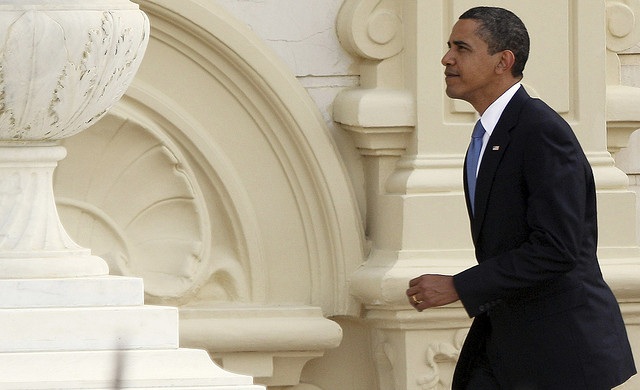A few weeks ago President Obama urged the Congress to formulate measures that would help in trimming down nation’s fiscal deficit in a more gradual way rather than sudden kneejerk cuts.

The President reiterated his inclination of smaller spending cuts and raising additional revenue through reforming existing tax laws to avert sequestration whilst he assured congressional leaders that he would help prevent pushing the economy into disorder from “self inflicting wounds”.
In case the lawmakers fail to find a solution on how to lessen deficit before the March 1 deadline then $1.2 trillion across-the-board automatic spending cuts will be set off, spread evenly between defense and non-defense areas over the course of 10 years.
Speaking to press reporters at the White House earlier this month, President Obama, said, “Economists and business leaders from across the spectrum have said that our economy is poised for progress in 2013 and we’ve seen signs of this progress over the last several weeks; but we’ve also seen the effects that political dysfunction can have on our economic progress… The threat of massive, automatic cuts has already started to affect business decisions. So we’ve been reminded that while it’s critical for us to cut wasteful spending, we can’t just cut our way to prosperity.”
The president urged the Republicans to adopt more “balanced approach” (cutting deficit both by spending cuts and stripping tax breaks on wealthy Americans) instead of solely relying on spending cuts for reducing the fiscal deficit, adding that that his previous negotiations with the House Speaker John Boehner have made substantial progress and all was needed a “balanced mix of spending cuts and tax reform” to take the talks further.
“The proposals that I put forward during the ‘fiscal cliff’ negotiations in discussions with Speaker Boehner and others are still very much on the table,” said President Obama.
It seems that top GOP leaders, if not the entire party, are ready to show some flexibility over their stance on the budget talks, so that dreaded automatic spending cuts, or sequester, expected to come into effect from March 1 is averted.
Indeed, according to media reports, top GOP leaders have privately started to accept the fact that in case sequester is set off then subsequent layoffs, furloughs, close down or scaling down of many federal services would wreck havoc for the U.S. economy, at a time when it is looking to gain some traction. That’s why the Republicans want to cut a deal, provided their demands are also met.
Republican’s growing uneasiness over lack of progress made on the budget talks was clearly visible when House Speaker, John Boehner, in his news conference recently said, “Let me make clear: I don’t like the sequester.”
What this statement proves is that top Republican aides are in favor of avoiding massive spending cuts even as some Republicans are comfortable with those.
“I think it’s taking a meat ax to our government, a meat ax to many programs and it will weaken our national defense; That’s why I fought to not have the sequester in the first place. But the president didn’t want to have to deal with the debt limit again before his reelection,” said Boehner according to Politico, a Virginia based political Journal.
According to Politico, a top GOP leadership aide, who did not wished to be named, said that the congressional Republican leaders have laid down 10 options which they are willing to accept including savings proposals prepared by the GOP, in order to prevent sequester.
However, the source familiar with the matter made it clear that in case Boehner’s demands on spending cuts are not met then he would be ready to let sequester come into effect from March 1.
“That is correct, I will,” said Boehner to press reporters when asked whether he would allow sequester to come into effect if the White House does not accept his demand for spending cuts.


 Hot Features
Hot Features












